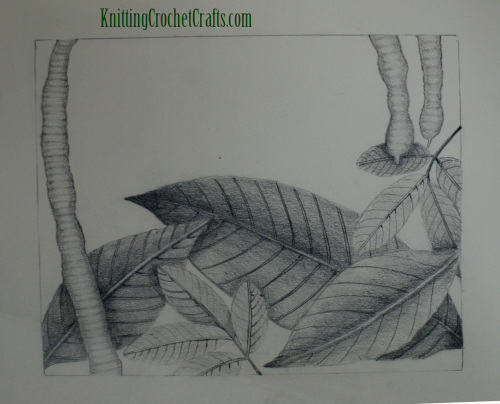
Botanical Illustration of Leaves and Beans by Amy Solovay — Graphite, Spring 2000
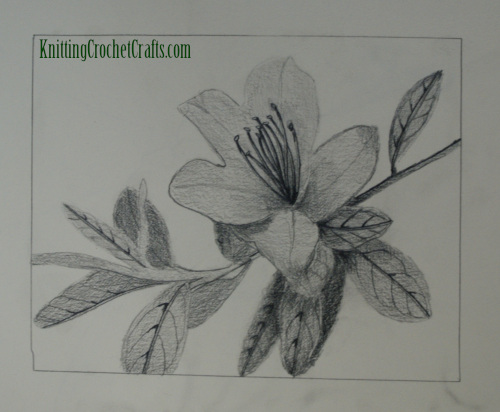
Botanical Illustration of stem, flower and leaves by Amy Solovay — Graphite, Spring 2000.
Botanical illustrators use a variety of media to capture the essential visual details of how plants look in their varying stages of life. A botanical illustration would ideally portray a plant’s seeds, buds, flowers, leaves, stems, fruits and root system, although it is not strictly necessary to reveal all of these elements. It might also show multiple phases of growth — perhaps revealing what the plant looks like as a seedling and also at maturity. It is typical for a botanical illustration to show both front and back of a plant’s leaves, revealing as much detail as possible about the leaf shape and veining patterns.
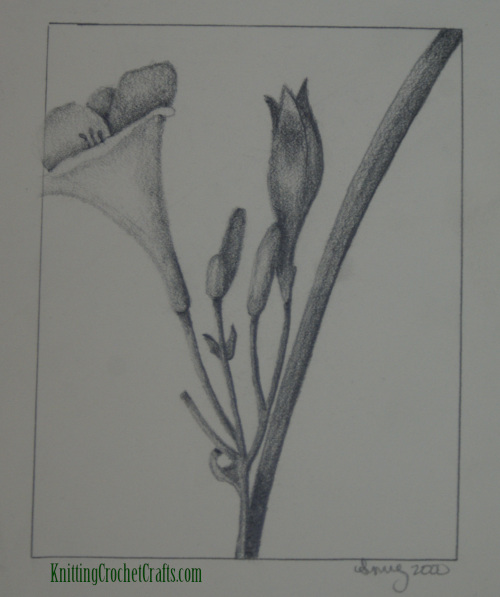
Botanical Illustration With Stem, Flower and Flower Buds by Amy Solovay — Graphite, Spring 2000
Botanical illustrations are meant to be realistic and scientifically accurate, capturing the details that differentiate the particular plant species being illustrated from other similar plants. The botanical illustrator typically works from live specimens of the plant that is being illustrated and aims for precise realism when drawing or painting each detail of the plant.
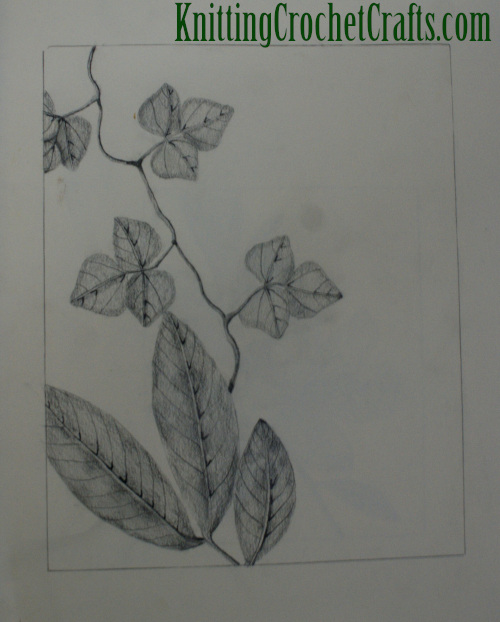
Botanical Illustration With Leaves by Amy Solovay — Graphite, Spring 2000
It’s typical to find botanical illustrations reproduced in scientific publications about plants or nature. They’re also included in other places such as horticulture books and gardening magazines. Some people also use them as wall art.
Botanical illustrations can be drawn using graphite, colored pencils or inks; they can also be painted using watercolor paints, gouache paints, oil paints or other media. Watercolor paintings tend to be the preferred media for this art form. If you are new to botanical illustration, and you haven’t already developed expertise with using any of the above media, I would recommend starting by creating an underlying drawing using graphite pencil and then painting in the details using watercolor or gouache paints.
When working on a botanical illustration, it’s ideal to draw smaller plants at life size; however, this is not always practical for portraying trees or larger plants. If you are not working at life size, it is customary to indicate the scale you are working at.
I took a botanical illustration class at a local botanical garden in Spring of the year 2000. In that class, I drew the botanical illustrations pictured above.
One of my main takeaways from the class: It takes a long, long time to get good at botanical illustration — so if you are a beginner to this art form, and you are serious about improving your abilities, please stick with it and do not get discouraged. I went into that class as an experienced artist who had already completed a bachelor’s degree with a studio art minor — and, at the time I was employed as a textile designer, so I had already been spending a fair amount of time creating artwork that featured floral and botanical forms. I found that botanical drawings were extremely slow to progress, and took a high level of concentration to do well. Patience is a necessary character trait for success with this art form.
If you are able to get to a botanical garden near your home, that would definitely be a fantastic environment for learning how to draw plants. One of my favorite things to do on vacation is to visit the botanic gardens in whatever place I am visiting — and if you plan to spend any significant amount of time on botanical illustration, I recommend doing that, too. But if you don’t have one nearby, no worries — there are lots of places you can find living plant specimens to work from.
If you have a backyard, that’s the other ideal place to start. If you don’t have a backyard, buy yourself a few flower pots and some soil, and grow a few of your own plants to draw. Why not? Or get outside wherever it’s comfortable to do so. You could go to the local park or a nearby hiking trail.
I make this recommendation because, if you want to succeed at botanical illustration, you have to spend a lot of time looking at plants. I mean you must spend time really, seriously looking at them — absorbing the details that make each plant unique so that you can do an outstanding job of showing each plant’s special characteristics. Frequently, the differences between species can be subtle, and it is the oh-so-subtle nuances that need to be captured when you are working on botanical illustrations.
As I mentioned above, truly focused botanical illustrators strive for absolute realism in their work. As a textile designer, that was NOT my goal at all. My goal was to gain experience drawing more realistic flowers, leaves and botanical forms — but in my line of work, I was never actually tasked with drawing or painting realistic flowers. The company I worked for did textile prints that were more fanciful and abstract than realistic.
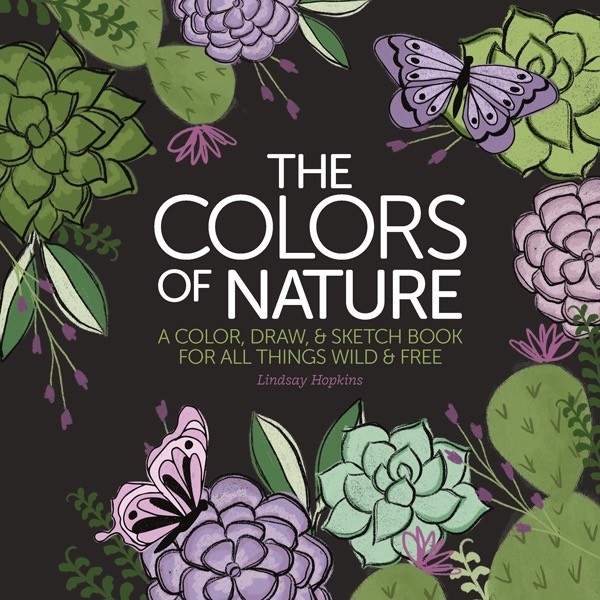
The Colors of Nature: A Color, Draw & Sketch Book for All Things Wild and Free! Published by Leisure Arts
There’s a lovely botanical sketch book I would recommend to other people who are interested in trying more fanciful or abstract botanical art; it isn’t necessarily an outstanding recommendation for botanical illustrators who are striving for absolute realism in their work, but it’s a fantastic resource if you are interested in — say for example — learning how to draw plants and flowers for the purposes of illustrating children’s story books or improving your abilities to draw flowers and plants in textile designs or personal artwork. The book is called The Colors Of Nature: a Coloring Book, Sketch Book and Art Journal. I adore this book! I think it’s a wonderful and inspiring resource for beginners to botanical art, and I highly recommend it.
So there you have it: Those are some of the most important basics you need to know about botanical illustration. Have questions about this subject? Drop me a comment in the comments section below; if I know the answer to your question, I will do my best to help.
Find More Pages About Painting, Drawing, Illustration and Art
- Fashion Illustration
- Illustration: Main Directory
- Drawing With Markers
- Find More Art and Craft Project Ideas HERE.
Posted By: Amy Solovay
This page was last updated on 8-28-2023.